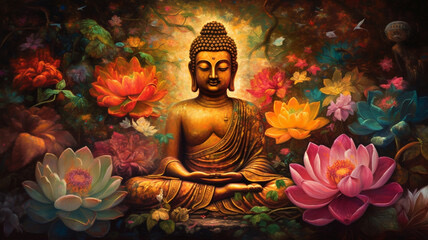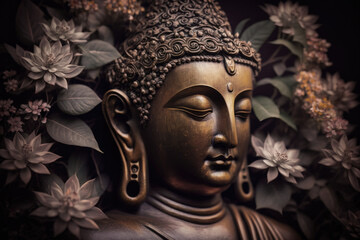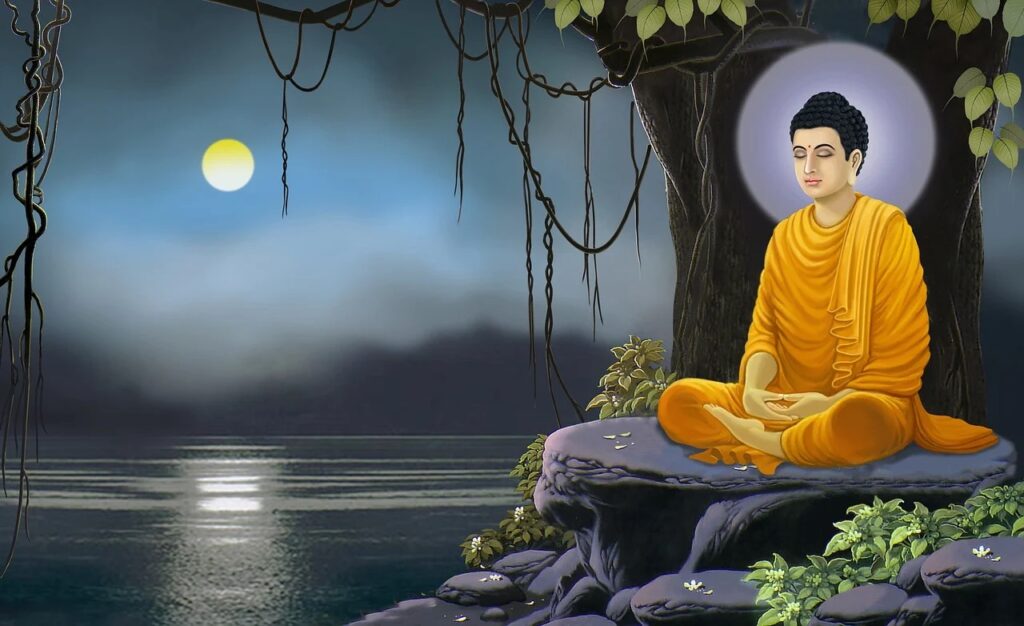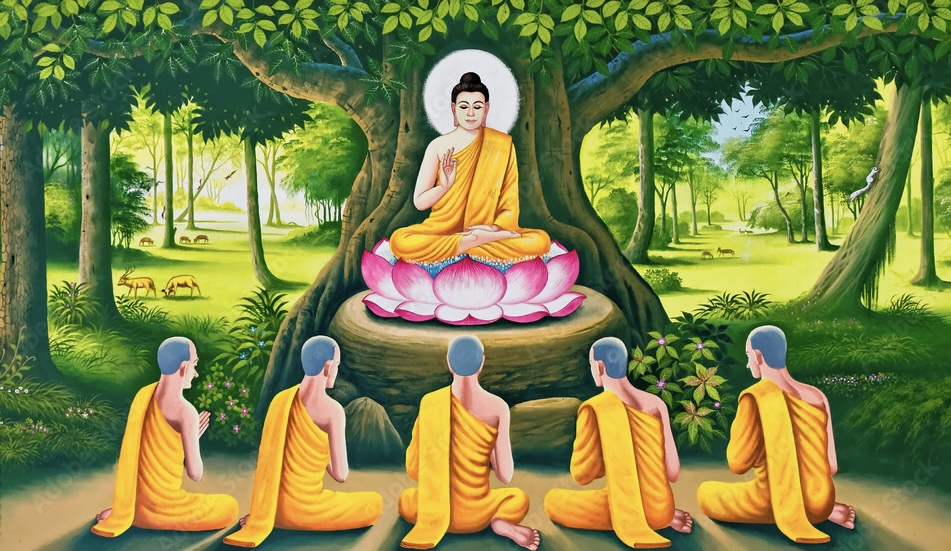
Although I was raised in a Christian Protestant home, as an adult I unintentionally came to be an accidental Buddhist. To premise, I never really connected to that part of the world where Christianity originated. Nor could I connect with the lives of the people who comprise the Christian Bible’s plethora of teaching stories.
Moreover, attending Christian church services with my family was sheer drudgery for me as a child. Thus, once grown, I refrained from attending church services altogether.
Then at the age of forty, I experienced a strong emotional upheaval in my personal life. It was then, for the first time, I began to yearn for an authentic connection to Spirit. I first began reading from the Self-Help Psychology section of the local bookstore. I found great solace from these books, especially when they quoted the Buddha, and other Eastern Masters.
Eventually, it occurred to me that I was reading modern day authors’ interpretation of these ancient words of wisdom. Thus, I began to seek out the Masters’ original works.
Thus, began my study, and love affair with Eastern Philosophy. I devoured as many works of the great Masters of the East, as I could find. And to be fair, I also read the Christian, Hebrew, and Islamic “Bibles.” Additionally, to attain a deeper understanding of the various religions, I even took a comparative religion college course.
Who Was the Buddha Anyway?

The Buddha, born as Siddhartha Gautama in the 500s BC, was a prince of an east Indian royal family. Consequently, he grew up behind palace walls shielded from the suffering of humanity in a life of riches and indulgence.
Then one day, for the first time, Siddhartha ventured outside the palace walls. There he observed three forms of suffering. He encountered a sick man, an aged crippled man, and a dying man. Fearing he would eventually experience these things, he vowed to become enlightened in his current lifetime. Therefore, he would no longer incarnate and no longer be subject to the cycle of birth, death, and rebirth.
Siddhartha then left the palace to become a wandering ascetic on a mission to become enlightened. For he observed that ascetic Yogis sought enlightenment with this method.
Siddhartha, the Buddha Achieves Enlightenment

After much time spent in asceticism and meditation and almost dying, Siddhartha had a Samadhi (enlightenment) experience. He saw the truth of how the Universe works. He saw the material world as Maya (illusion) and the non-material world as real. This is in line with what we know about Quantum Physics today. For the material world is malleable, meaning it’s created with our intentions.
Having become enlightened, Siddhartha had earned the “Buddha” title, which means “Enlightened One.”
Notably, in Buddha’s Samadhi experience he realized that neither extreme of indulgence or of asceticism would induce enlightenment. Instead, a “Middle Way’ between extremes must be followed for the enlightenment that ends the cycle of birth-death-rebirth. For indulgence prevents one from desiring Enlightenment and asceticism causes one to be too sick or die before achieving it.
Subsequently, the Buddha traveled around teaching what he had discovered so others could become enlightened as well. And, by doing so, he accumulated many followers. Consequently, Buddhism spread all over Asia and over time the remainder of the world.
Buddhist is Self-Help Psychology via the Four Noble Truths

During my aforementioned time of study, I was reading 50-60 books a year, mostly in the Eastern Philosophy genre. From my study, I found the 2,500 year old Buddhist teachings to be the most logical, and helpful for me.
Additionally, I was delighted that Buddha’s teachings aren’t predominately a collection of teaching stories, like the Christian, Hebrew, and Islamic teachings. Rather, they are direct words of guidance for successfully navigating the pitfalls of life. And they are as valid today as they were 2,500 years ago and will be so for all future generations.
The Four Noble Truths
Buddha taught “Four Noble Truths;” suffering exists, suffering has causes, suffering can end, and the path that ends suffering.
Moreover, Buddha asserted, among other things, craving, attachment, or aversion to things that are impermanent cause our suffering. Furthermore, he assured that overcoming these causes will end our suffering. He then suggested we give his offered solutions a try, to determine for ourselves, if they indeed work for us.
My own experience has been that Buddha’s solutions do work for me, as they’ve worked for a multitude of others. Therefore, I believe Buddhism more psychology than religion and the Buddha one of our earliest psychotherapist.
Surprise, the Law of Attraction is Buddhist
OMG, the number one buzz phrase among self-help psychology books and life coaches today is the “Law of Attraction.” And it seems you can’t throw a stick without hitting a Law of Attraction Life Coach.
The Abraham material channeled by Esther Hicks, and The Secret book/documentary are the most often quoted Law of Attraction sources. Basically, we attract into our life whatever we think and speak about, the wanted and the unwanted. So it’s important we only think and state what we do want, never what we don’t want.
But guess what? The Law of Attraction is not a New Age discovered phenomenon. For Buddha realized and taught the Law of Attraction (along with all Universal laws) 2,500 years ago. He stated, “we are what we think…we create our reality with our thoughts.” This means whatever we have in our life today, good or bad, we thought it yesterday.
Buddhism’s Noble Eightfold Path

Referring to the Four Noble Truths above, number four hints at a “path” to end suffering. For this, Buddha proposed these eight ways to live in order to achieve Enlightenment and break the cycle of birth-death-rebirth.
Volumes exist explaining each of the below Noble Eightfold Path tenants. Basically, they are performed while observing “Ahimsa” or non-harming. Therefore, “Right” here is doing the thing without harming self or others. And “Right” is also observing the Middle Way, or doing without resorting to extremes.
Furthermore, if one follows this Noble Eightfold Path, with Ahimsa while observing the Middle Way they can end their suffering. For they will attain Enlightenment in their current lifetime.
- Right Understanding
- Right Thought
- Right Speech
- Right Action
- Right Livelihood
- Right Effort
- Right Mindfulness
- Right Concentration
Buddhism as a Spiritual Science
Though many have tried to make it a religion, Buddhism is actually a spiritual science. This is also true of Taoism, and Yoga Philosophy. Rather than requiring adoption of beliefs and doctrine, a spiritual science only asks that one give its methods a try. Then, only adopt its methods if they give the desired results.
Furthermore, spiritual sciences leave accomplishing one’s spiritual goals entirely up to the individual. Conversely, organized religions require an intermediary, such as a priest or minister.
Final Words on How I Came to be an Accidental Buddhist
The reason I say that I “accidentally” became a Buddhist, is because no one really does so intentionally. For Buddhists claim, that just being curious enough about Buddhism to look into it makes you a Buddhist.
Buddhism is about personal experimentation to find what works to reduce your suffering and make your life easier. And guess what? You can be Christian, or a member of any other organized religion, and also be a Buddhist. After decades of spiritual research, I now consider myself a Buddhist-Taoist-Yogini.
I hope you are now curious enough to look into Buddhism for your own knowledge and spiritual well-being. I know you won’t be sorry that you did.
Loved this post! Quick easy to read! Thank you for this maybe I am becoming a Buddhist by accident too!
My guess is you are Rosilyn. Lol! Thank you for reading and commenting.